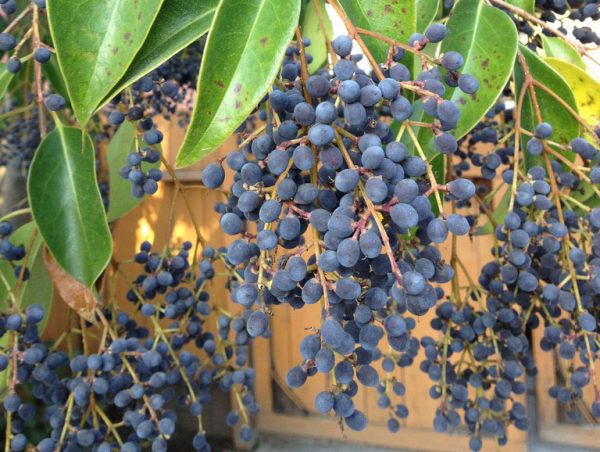Invading plants threaten native forests and flowers

If you live in the Southeastern United States, you’ve probably seen the shrub pictured above. Despite its attractive clusters of white flowers that lead to big purple fruits, privet is another invader to hate.
|
Free workshop The Greater Uwharrie Conservation Partnership will hold a free Invasive Species Workshop Aug. 22 at Montgomery County Community College in Troy. More information. |
Because their evergreen leaves work year round, these bullies are especially noticeable in the winter around our wetlands, as they out-compete native wildflowers, ferns and smaller shrubs for light and nutrients.
Invasions of nonnative plants into Southern forests are largely unchecked and only partially monitored. Invasive nonnative plants quickly take over the forest and occupy small forest openings, increasingly eroding forest productivity by degrading diversity and wildlife habitat. Although some have been introduced accidentally, most were brought here for decorative landscaping. Without their natural predators of insects and diseases that usually keep native plants in balance, natives never see the light of day.
In the N.C. Piedmont region, microstegium (Japanese stiltgrass) and privet topped the list compiled by N.C. Wildlife Commission biologist Kelly Douglass, who tallied the invasive species by incidence at more than 100 different properties.
|
Top invasives in Piedmont 1. microstegium (Japanese stiltgrass). 2. privet. 3. honeysuckle. 4. lespedezas (bush clover). 5. tree of heaven (Ailanthus altissima). 6. multiflora rose. 7. sod-forming grasses (such as fescue, bermuda, crab) or exotic grasses (such as Johnson, paspalum). 8. princess tree. 9. autumn or russian olive. 10. kudzu. 11. wisteria. 12. thistle. 13. nandina. 14. mimosa. 15. vinca (periwinkle), ivy. 16. chinaberry. 17. morning glory. 18. bamboo. 19. trifoliate orange. 20. Bradford pear. |
Douglass notes the list is not a scientific vegetative survey. No. 3 was honeysuckle, followed by lespedezas (bush clover) and tree of heaven (Ailanthus altissima).
Because invasive species are such a widespread nuisance, it is increasingly important for private landowners and land managers to join in the fight against these plants.
The Greater Uwharrie Conservation Partnership will hold a free Invasive Species Workshop Aug. 22, 9 a.m.-3:30 p.m., at Montgomery County Community College in Troy.
The workshop’s morning session will give background information on invasive species and new threats, identification techniques and tools for management.
The afternoon session will be a field demonstration of the management tools at the Nichols Longleaf Pine Preserve and practical experience identifying invasive plants. The workshop offers 4.0 hours of Pesticide Credits toward a Pesticide License.
To attend, register by Aug. 18 at http://gucpworkshop.weebly.com/ or contact Brooke Massa, 919-630-3086, brooke.massa@ncwildlife.org. Space is limited to 75 attendees.
Leeann Chen and Erika Hansen are interns with the LandTrust for Central North Carolina.
Leeann Chen & Erika Hansen